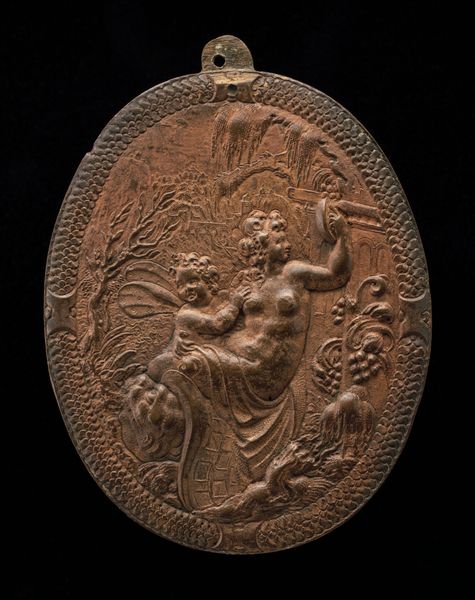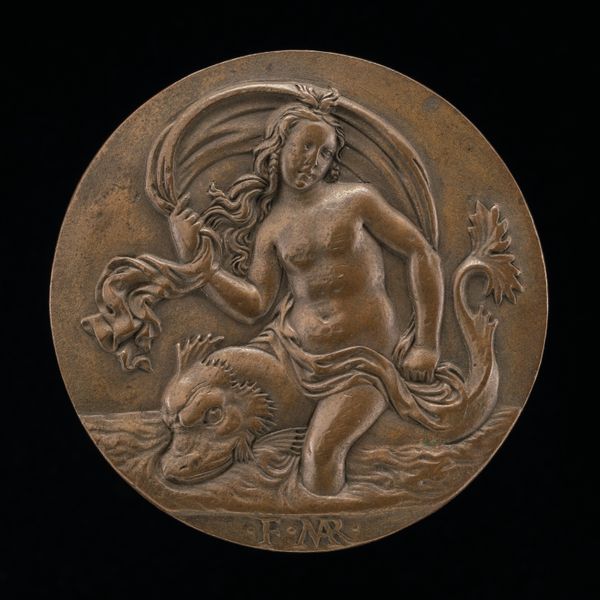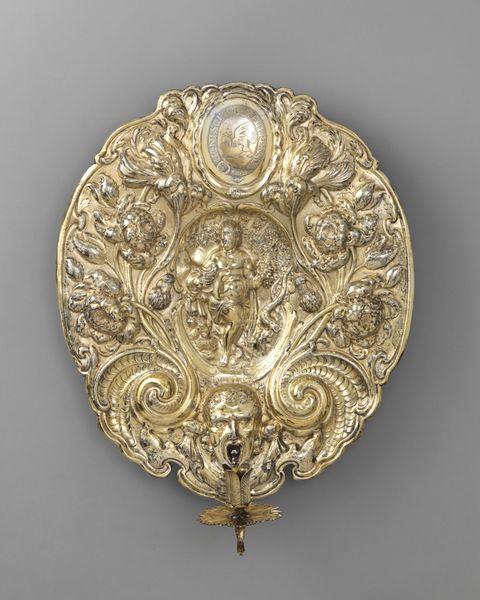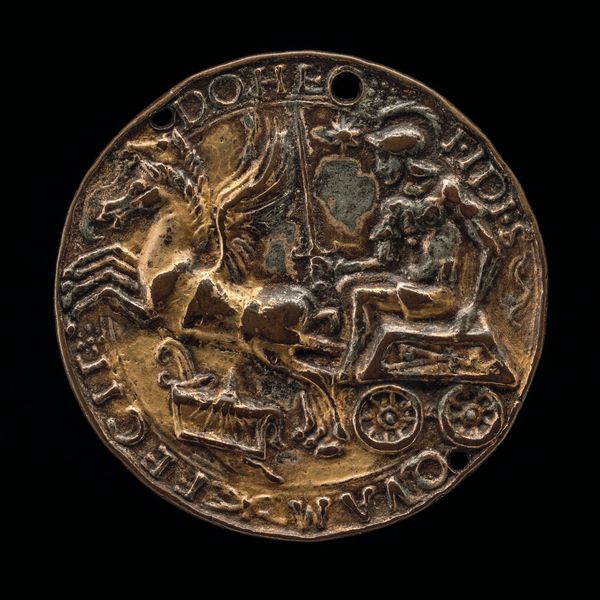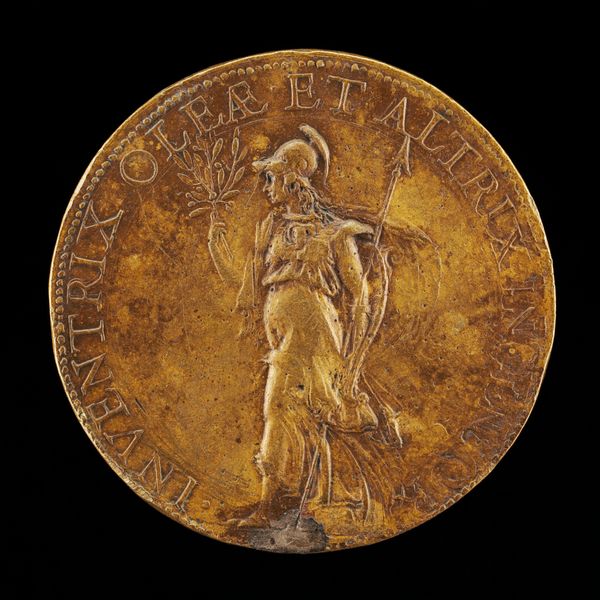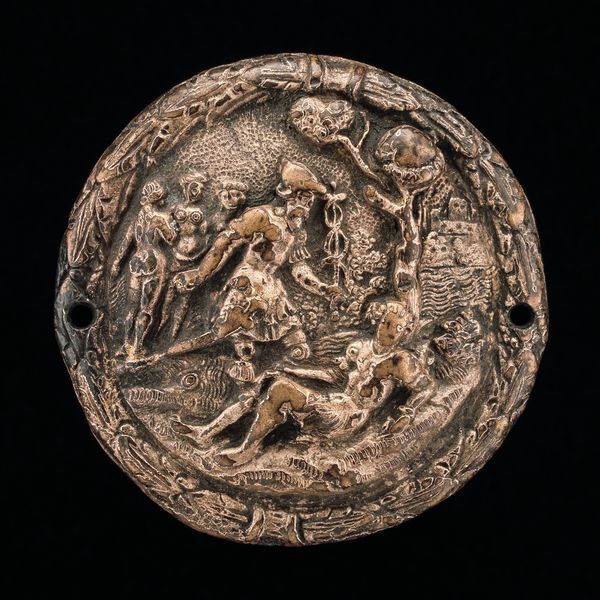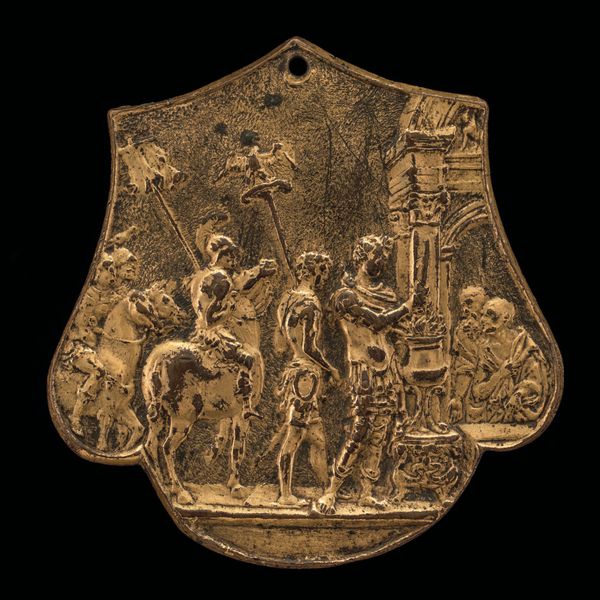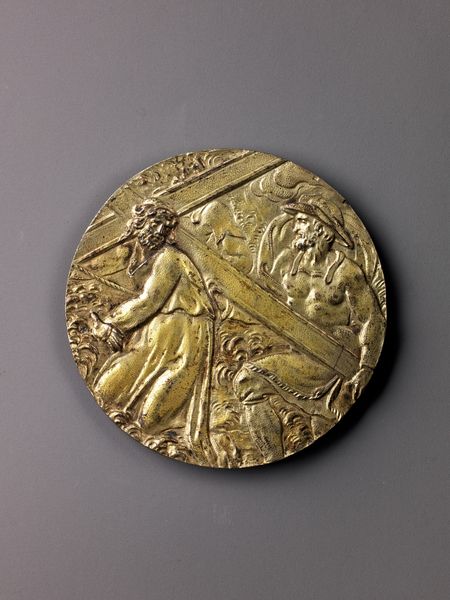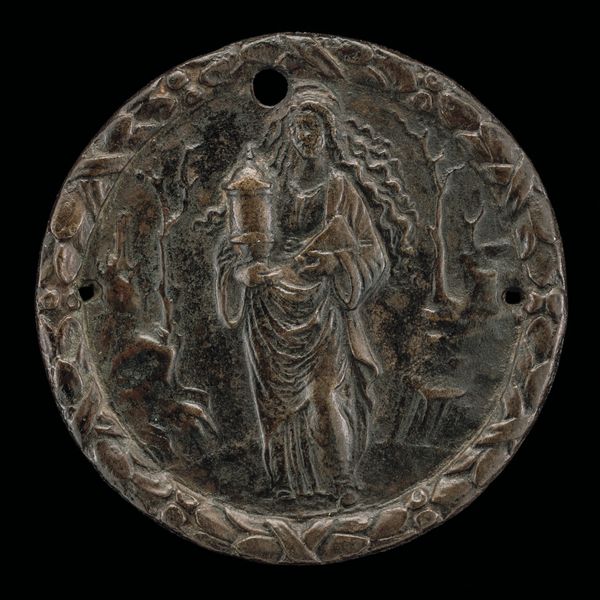
metal, relief, sculpture
#
portrait
#
metal
#
sculpture
#
relief
#
figuration
#
11_renaissance
#
sculpture
#
intricate pattern
Dimensions: overall (diameter): 5.5 cm (2 3/16 in.) gross weight: 27 gr
Copyright: National Gallery of Art: CC0 1.0
Curator: Take a look at this intricate circular relief titled "Cupid Playing on the Lute," a metal artwork from approximately the 16th century created by an anonymous artist. What is your immediate reaction to it? Editor: The detail is astonishing! It looks quite heavy, almost imposing despite the cherubic subject matter. It projects an aura of formalized love, like a crafted pronouncement, rather than a spontaneous expression of it. Curator: It's fascinating how the artist translates the subject and its emotional impact through material form, isn't it? We can speculate the production of metalwork during the Renaissance involved specialized workshops and techniques, indicating the commissioning party would be fairly well-off, socially and economically. Considering Cupid, this speaks volumes about constructed notions of desire, wealth, and access. Editor: Yes, Cupid, a central figure, immediately directs our focus to love, of course, but filtered through layers of classical symbolism. We see scrolling foliage, grotesque masks along the base, and theatrical figures that serve as brackets or corbels to the composition. The repetition of symbolic elements serves a deliberate function. What statement is made by the inclusion of, say, those grimacing faces among the other ornamentation? Curator: The "grotesques" likely relate back to discoveries of ancient Roman frescoes in the late 15th century. They demonstrate an interest in, and claim to, classical learning. The relief could well have functioned within a domestic interior. How did this affect its reception? Editor: These recurring motifs contribute to the overall richness. But the figures on the sides resemble jesters or theatrical figures, implying some form of dramatic performance or perhaps even satire on courtship? Curator: Intriguing! The intentional combination of materials, allegorical themes, and symbolic weight invites close consideration of the era’s social aspirations and values. In other words, these symbols have different meanings across different historical moments. Editor: The figures frame and animate the message. Considering its craftsmanship, I'm still struck by how it straddles a line between joy and something far more mannered, calculated even. Curator: Ultimately, analyzing this work has helped us examine Renaissance ideas and how visual vocabularies can reinforce systems of power, even through Cupid. Editor: Yes, the dialogue between Cupid and other theatrical figures presents endless interpretative possibilities.
Comments
No comments
Be the first to comment and join the conversation on the ultimate creative platform.

